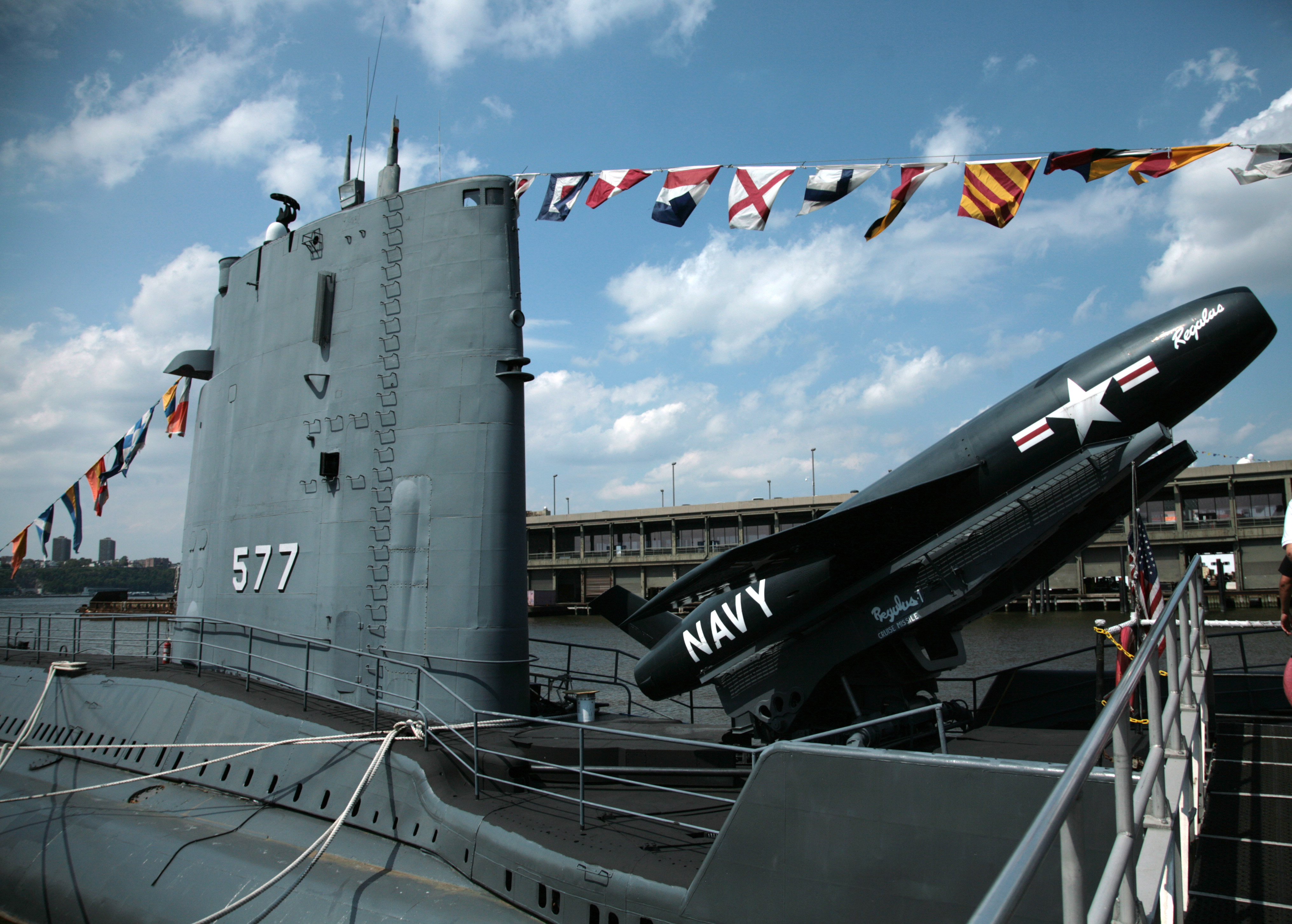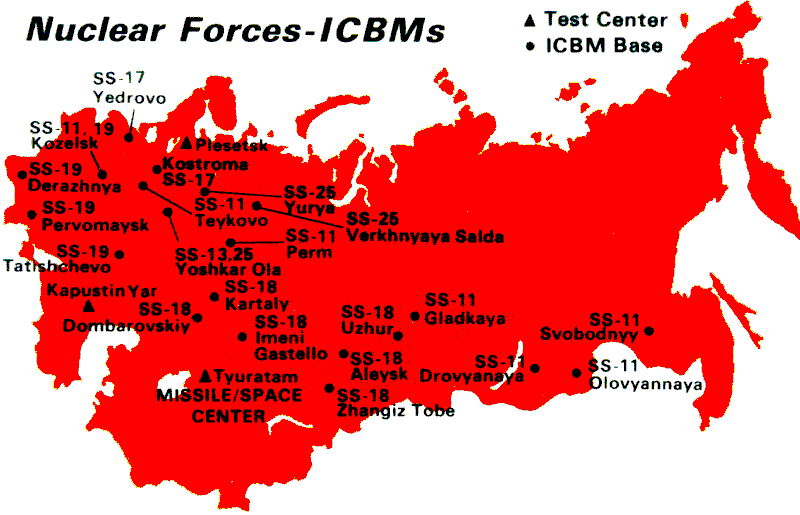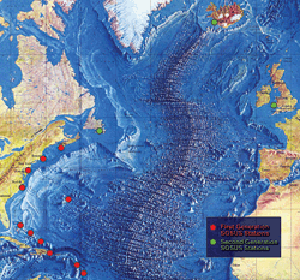|
Submarine Detection System
Submarine detection systems are an aspect of antisubmarine warfare. They are of particular importance in nuclear deterrence, as they directly undermine one of the three arms of the nuclear triad by making counter-force attacks on submarines possible. Types of system They break down into two broad categories; acoustic and non-acoustic. Acoustic systems in turn break down into active sonar systems and passive sonar systems designed to detect the acoustic signature of submarines such as SOSUS. Non-acoustic systems can work on a variety of different physical principles, including the use of magnetic anomaly detectors and systems such as SOKS, which are believed to work by detecting phenomena such as trace chemicals, heat changes, and radioactivity left in a submarine's wake. There is evidence that some Royal Navy The Royal Navy (RN) is the United Kingdom's naval warfare force. Although warships were used by English and Scottish kings from the early medieval period, the ... [...More Info...] [...Related Items...] OR: [Wikipedia] [Google] [Baidu] |
Antisubmarine Warfare
Anti-submarine warfare (ASW, or in older form A/S) is a branch of underwater warfare that uses surface warships, aircraft, submarines, or other platforms, to find, track, and deter, damage, or destroy enemy submarines. Such operations are typically carried out to protect friendly shipping and coastal facilities from submarine attacks and to overcome blockades. Successful ASW operations typically involved a combination of sensor and weapon technologies, along with effective deployment strategies and sufficiently trained personnel. Typically, sophisticated sonar equipment is used for first detecting, then classifying, locating, and tracking a target submarine. Sensors are therefore a key element of ASW. Common weapons for attacking submarines include torpedoes and naval mines, which can both be launched from an array of air, surface, and underwater platforms. ASW capabilities are often considered of significant strategic importance, particularly following provocative instances of ... [...More Info...] [...Related Items...] OR: [Wikipedia] [Google] [Baidu] |
Nuclear Deterrence
Deterrence theory refers to the scholarship and practice of how threats or limited force by one party can convince another party to refrain from initiating some other course of action. The topic gained increased prominence as a military strategy during the Cold War with regard to the use of nuclear weapons and is related to but distinct from the concept of mutual assured destruction, which models the preventative nature of full-scale nuclear attack that would devastate both parties in a nuclear war. The central problem of deterrence revolves around how to credibly threaten military action or nuclear punishment on the adversary despite its costs to the deterrer. Deterrence is widely defined as any use of threats (implicit or explicit) or limited force intended to dissuade an actor from taking an action (i.e. maintain the status quo). Deterrence is unlike compellence, which is the attempt to get an actor (such as a state) to take an action (i.e. alter the status quo). Both are f ... [...More Info...] [...Related Items...] OR: [Wikipedia] [Google] [Baidu] |
Nuclear Triad
A nuclear triad is a three-pronged military force structure that consists of land-launched nuclear missiles, nuclear-missile-armed submarines, and strategic aircraft with nuclear bombs and missiles. Specifically, these components are land-based intercontinental ballistic missiles (ICBMs), submarine-launched ballistic missiles (SLBMs), and strategic bombers. The purpose of having this three-branched nuclear capability is to significantly reduce the possibility that an enemy could destroy all of a nation's nuclear forces in a first-strike attack. This, in turn, ensures a credible threat of a second strike, and thus increases a nation's nuclear deterrence. Traditional components of a strategic nuclear triad While traditional nuclear strategy holds that a nuclear triad provides the best level of deterrence from attack, in reality, most nuclear powers do not have the military budget to sustain a full triad. While only the United States and Russia have maintained strong nuclear triads ... [...More Info...] [...Related Items...] OR: [Wikipedia] [Google] [Baidu] |
Counter-force Attack
In nuclear strategy, a counterforce target is one that has a military value, such as a launch silo for intercontinental ballistic missiles, an airbase at which nuclear-armed bombers are stationed, a homeport for ballistic missile submarines, or a command and control installation. The intent of a counterforce strategy (attacking counterforce targets with nuclear weapons) is to conduct a pre-emptive nuclear strike which has as its aim to disarm an adversary by destroying its nuclear weapons before they can be launched. That would minimize the impact of a retaliatory second strike. However, counterforce attacks are possible in a second strike as well, especially with weapons like UGM-133 Trident II. A counterforce target is distinguished from a countervalue target, which includes an adversary's population, knowledge, economic, or political resources. In other words, a counterforce strike is against an adversary's military, and a countervalue strike is against an adversary's cities. A ... [...More Info...] [...Related Items...] OR: [Wikipedia] [Google] [Baidu] |
Active Sonar
Sonar (sound navigation and ranging or sonic navigation and ranging) is a technique that uses sound propagation (usually underwater, as in submarine navigation) to navigate, measure distances (ranging), communicate with or detect objects on or under the surface of the water, such as other vessels. "Sonar" can refer to one of two types of technology: ''passive'' sonar means listening for the sound made by vessels; ''active'' sonar means emitting pulses of sounds and listening for echoes. Sonar may be used as a means of acoustic location and of measurement of the echo characteristics of "targets" in the water. Acoustic location in air was used before the introduction of radar. Sonar may also be used for robot navigation, and SODAR (an upward-looking in-air sonar) is used for atmospheric investigations. The term ''sonar'' is also used for the equipment used to generate and receive the sound. The acoustic frequencies used in sonar systems vary from very low (infrasonic) to extrem ... [...More Info...] [...Related Items...] OR: [Wikipedia] [Google] [Baidu] |
Passive Sonar
Sonar (sound navigation and ranging or sonic navigation and ranging) is a technique that uses sound propagation (usually underwater, as in submarine navigation) to navigation, navigate, measure distances (ranging), communicate with or detect objects on or under the surface of the water, such as other vessels. "Sonar" can refer to one of two types of technology: ''passive'' sonar means listening for the sound made by vessels; ''active'' sonar means emitting pulses of sounds and listening for echoes. Sonar may be used as a means of acoustic location and of measurement of the echo characteristics of "targets" in the water. Acoustic location in air was used before the introduction of radar. Sonar may also be used for robot navigation, and SODAR (an upward-looking in-air sonar) is used for atmospheric investigations. The term ''sonar'' is also used for the equipment used to generate and receive the sound. The acoustic frequencies used in sonar systems vary from very low (infrasonic ... [...More Info...] [...Related Items...] OR: [Wikipedia] [Google] [Baidu] |
Acoustic Signature
The term acoustic signature is used to describe a combination of acoustic emissions of sound emitters, such as those of ships and submarines. In addition, aircraft, machinery, and living animals can be described as having their own characteristic acoustic signatures or sound attributes, which can be used to study their condition, behavior, and physical location. Military use The analysis of acoustic signatures is an important adjunct to passive sonar used to track naval warships and weapons. Similar methods have been used to identify aircraft, especially before the development of sophisticated radar tracking. Sound characteristics The acoustic signature is made up of a number of individual elements. These include: *Machinery noise: noise generated by a ship's engines, propeller shafts, fuel pumps, air conditioning systems, etc. *Cavitation noise: noise generated by the creation of gas bubbles by the turning of a ship's propellers. *Hydrodynamic noise: noise generated by the m ... [...More Info...] [...Related Items...] OR: [Wikipedia] [Google] [Baidu] |
SOSUS
The Sound Surveillance System (SOSUS) was a submarine detection system based on passive sonar developed by the United States Navy to track Soviet submarines. The system's true nature was classified with the name and acronym SOSUS themselves classified. The unclassified name ''Project Caesar'' was used to cover the installation of the system and a cover story developed regarding the shore stations, identified only as a Naval Facility (NAVFAC), being for oceanographic research. In 1985, as the fixed bottom arrays were supplemented by the mobile Surveillance Towed Array Sensor System (SURTASS) and other new systems were coming on line, the name itself changed to Integrated Undersea Surveillance System (IUSS). The commands and personnel were covered by the "oceanographic" term until 1991 when the mission was declassified. As a result, the commands, Oceanographic System Atlantic and Oceanographic System Pacific became Undersea Surveillance Atlantic and Undersea Surveillance Pacific, and ... [...More Info...] [...Related Items...] OR: [Wikipedia] [Google] [Baidu] |
Magnetic Anomaly Detector
A magnetic anomaly detector (MAD) is an instrument used to detect minute variations in the Earth's magnetic field. The term refers specifically to magnetometers used by military forces to detect submarines (a mass of ferromagnetic material creates a detectable disturbance in the magnetic field); military MAD equipment is a descendant of geomagnetic survey or aeromagnetic survey instruments used to search for minerals by detecting their disturbance of the normal earth-field. History Geoexploration by measuring and studying variations in the Earth's magnetic field has been conducted by scientists since 1843. The first uses of magnetometers were for the location of ore deposits. Thalen's "The Examination of Iron Ore Deposits by Magnetic Measurements", published in 1879, was the first scientific treatise describing this practical use. Magnetic anomaly detectors employed to detect submarines during World War II harnessed the fluxgate magnetometer, an inexpensive and easy to use t ... [...More Info...] [...Related Items...] OR: [Wikipedia] [Google] [Baidu] |
SOKS
SOKS, or System Obnarujenia Kilvaternovo Sleda (russian: Систем Обнаружения Кильватерново Следа, "wake object detection system"), is a nonacoustic submarine detection system created by the Soviet Union. SOKS functions by detecting radionuclides from the nuclear reactor in submarines, chemical signatures, and changes in the refractive index In optics, the refractive index (or refraction index) of an optical medium is a dimensionless number that gives the indication of the light bending ability of that medium. The refractive index determines how much the path of light is bent, or ... of water in the wake of submarines. It was first installed on the ''November''-class K-14 submarine in 1969. SOKS was revealed in a 1972 document written by the Central Intelligence Agency Directorate of Science & Technology and declassified in June 2017. References {{reflist Anti-submarine warfare Submarine detection systems Soviet inventions ... [...More Info...] [...Related Items...] OR: [Wikipedia] [Google] [Baidu] |
Wake (physics)
In fluid dynamics, a wake may either be: * the region of recirculating flow immediately behind a moving or stationary blunt body, caused by viscosity, which may be accompanied by flow separation and turbulence, or * the wave pattern on the water surface downstream of an object in a flow, or produced by a moving object (e.g. a ship), caused by density differences of the fluids above and below the free surface and gravity (or surface tension). Viscosity The wake is the region of disturbed flow (often turbulent) downstream of a solid body moving through a fluid, caused by the flow of the fluid around the body. For a blunt body in subsonic external flow, for example the Apollo or Orion capsules during descent and landing, the wake is massively separated and behind the body is a reverse flow region where the flow is moving toward the body. This phenomenon is often observed in wind tunnel testing of aircraft, and is especially important when parachute systems are involved, because ... [...More Info...] [...Related Items...] OR: [Wikipedia] [Google] [Baidu] |
Royal Navy
The Royal Navy (RN) is the United Kingdom's naval warfare force. Although warships were used by English and Scottish kings from the early medieval period, the first major maritime engagements were fought in the Hundred Years' War against France. The modern Royal Navy traces its origins to the early 16th century; the oldest of the UK's armed services, it is consequently known as the Senior Service. From the middle decades of the 17th century, and through the 18th century, the Royal Navy vied with the Dutch Navy and later with the French Navy for maritime supremacy. From the mid 18th century, it was the world's most powerful navy until the Second World War. The Royal Navy played a key part in establishing and defending the British Empire, and four Imperial fortress colonies and a string of imperial bases and coaling stations secured the Royal Navy's ability to assert naval superiority globally. Owing to this historical prominence, it is common, even among non-Britons, to ref ... [...More Info...] [...Related Items...] OR: [Wikipedia] [Google] [Baidu] |







02.jpg)